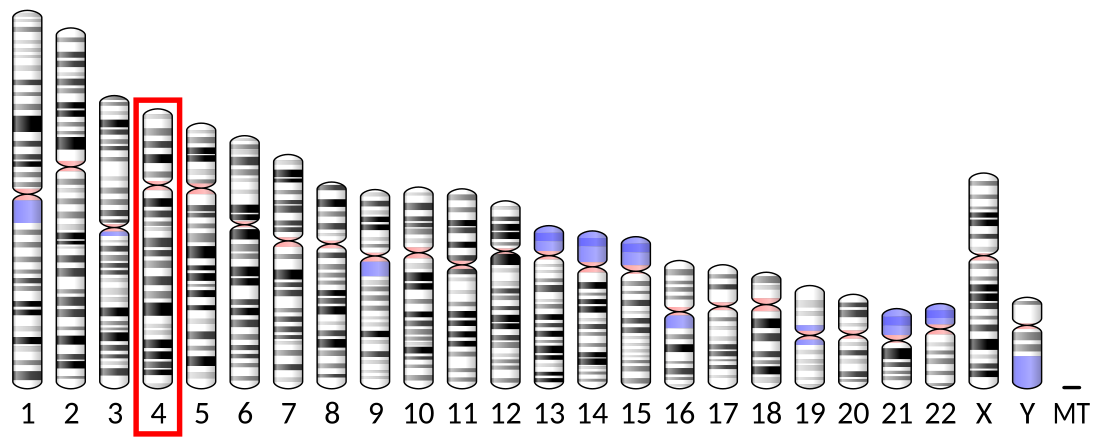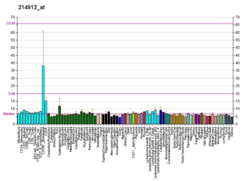Top Qs
Timeline
Chat
Perspective
ADAMTS3
Protein-coding gene in the species Homo sapiens From Wikipedia, the free encyclopedia
Remove ads
A disintegrin and metalloproteinase with thrombospondin motifs 3 is an enzyme that in humans is encoded by the ADAMTS3 gene.[5][6] The protein encoded by this gene is the major procollagen II N-propeptidase.[6]
Remove ads
Structure
This gene encodes a member of the ADAMTS (a disintegrin and metalloproteinase with thrombospondin motifs) protein family. Members of the family share several distinct protein modules, including a propeptide region, a metalloproteinase domain, a disintegrin-like domain, and a thrombospondin type 1 (TS) motif. Individual members of this family differ in the number of C-terminal TS motifs, and some have unique C-terminal domains. The protein encoded by this gene is the major procollagen II N-propeptidase.[6]
Remove ads
Function
Because of the high similarity to ADAMTS2, the major substrate of ADAMTS3 had been erroneously assumed to be procollagen II.[7] However, ADAMTS3 appears largely irrelevant for collagen maturation but instead is required for the activation of the lymphangiogenic growth factor VEGF-C.[8] Hence, ADAMTS3 is essential for the development and growth of lymphatic vessels. The proteolytic processing of VEGF-C by ADAMTS3 is regulated by the CCBE1 protein.
ADAMTS3 has been shown to cleave reelin, a protein that regulates the proper lamination of the brain cortex and whose signal activity is found to be disrupted in a number of neuropsychiatric conditions.[9]
Remove ads
Clinical significance
A deficiency of this protein may be responsible for dermatosparaxis, a genetic defect of connective tissues.[6]
Some hereditary forms of lymphedema are caused by mutations in ADAMTS3.[10][11]
References
Further reading
External links
Wikiwand - on
Seamless Wikipedia browsing. On steroids.
Remove ads





